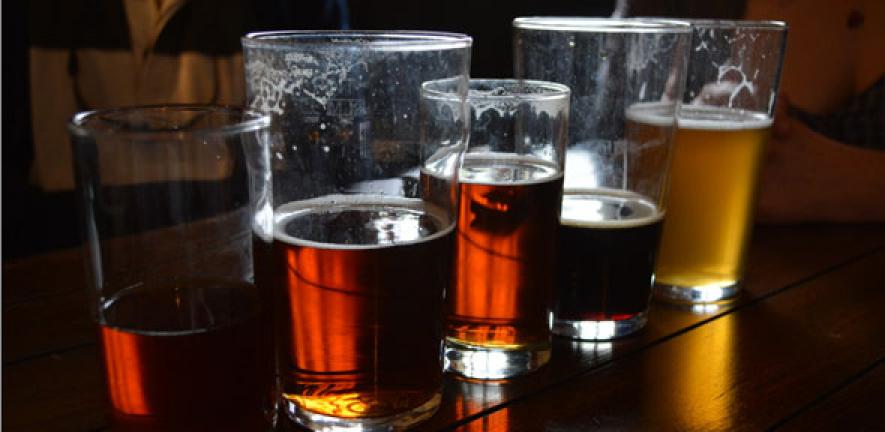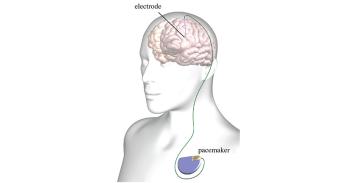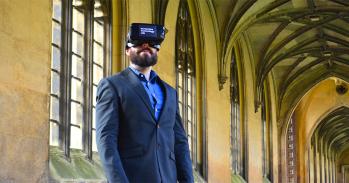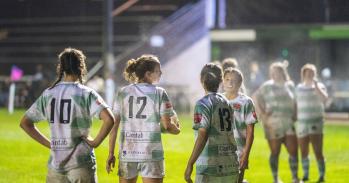
A student drinking survey carried out by the University of Cambridge suggests that while almost 30 per cent of students do not drink, a similar percentage drink more than the recommended weekly limit.
A student drinking survey carried out by the University of Cambridge suggests that while almost 30 per cent of students do not drink, a similar percentage drink more than the recommended weekly limit.
Promoting safer drinking is one way we can encourage and support student wellbeing.
Graham Virgo
More than 6,000 Cambridge undergraduate and graduate students responded to the survey. The mix of gender (52% female, 48% male) and level of study (67% undergraduate and 33% postgraduate) of survey respondents reflects that found in Cambridge’s student body.
While the results of any survey of this type should be interpreted with caution, the general patterns of the results suggest that Cambridge students’ experiences of alcohol are similar to those of their counterparts in other UK universities, when compared to a survey of students at 21 higher education institutions carried out in 2016 by the National Union of Students (NUS).
The Cambridge survey showed:
- A high proportion of students felt there was a need for more alcohol-free spaces (40%).
- A quarter of Cambridge students drink to get drunk regularly, compared to 41% in the NUS survey.
- Pre-drinking, while popular in Cambridge (46%) was less common than the NUS survey suggested (67%).
- Far fewer students in Cambridge (38%) think getting drunk is part of University culture (compared to 85% in the NUS survey).
- Just over a quarter of Cambridge students (26%) thought they had compromised their personal safety when drinking, compared to 52% in the NUS survey.
- Students drink for a mixture of reasons, with most not normally thinking about why they do so. Reasons for drinking included having fun (73%), to relax after a hard day (42%), peer pressure (20%), social routine (36%), and to overcome anxiety (18%).
- 21% of students reported sexual harassment (drinkers and non-drinkers), with 74% of those believing that alcohol had, in some way, been a factor (there are no comparative figures in the NUS survey).
- 3% of Cambridge students reported sexual assault (drinkers and non-drinkers) with 67% of those believing that alcohol had, in some way, been a factor (there are no comparative figures in the NUS survey).
Graham Virgo, Pro-Vice-Chancellor for Education, said: “We undertook this survey, not only because alcohol misuse is a serious public health issue which we have a moral responsibility to engage with, but also because we take the welfare of our students extremely seriously. We pride ourselves on our collegiate structure at Cambridge and the strengths this brings in ensuring exceptional levels of pastoral care for our students. Promoting safer drinking is one way we can encourage and support student wellbeing.
“However, the issues associated with alcohol consumption that emerge from the Cambridge survey, by and large, mirror those highlighted in the NUS survey and also tally with what we know to be wider societal trends and challenges.
“It is reassuring to know that we are not alone in facing these challenges but we cannot use the fact that alcohol misuse is multifactorial and societally endemic as an excuse for inaction and the outcomes from the survey helpfully highlight areas we can focus our energy to enact small but significant cultural change within the student body.”
The results, together with the results of the NUS survey, will be used to inform policies and initiatives aimed at giving advice and support to students. This is likely to include training for staff who interact with students, consideration of introducing alcohol-free spaces, and a campaign to address common misconceptions about the effects of alcohol.
The data detailing the negative impacts in particular will aid the University in its work to promote safer drinking. The inclusion of sexual harassment and assault data in the survey will also feed into ongoing work, both in Cambridge and nationally, to understand and prevent incidences of sexual harassment and assault.

The text in this work is licensed under a Creative Commons Attribution 4.0 International License. For image use please see separate credits above.




